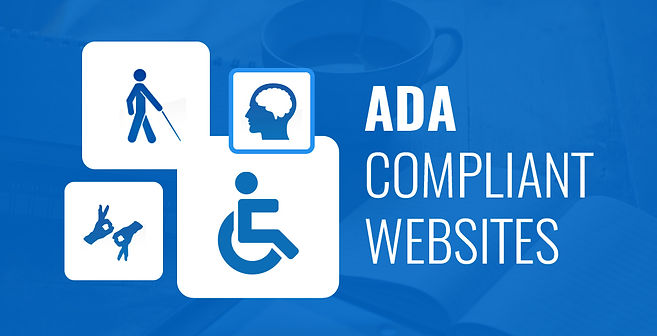.png)

ADA
ADA
The Americans with Disabilities Act (ADA) is a comprehensive civil rights law in the United States that prohibits discrimination against individuals with disabilities. Enacted in 1990, the ADA aims to ensure that people with disabilities have the same rights and opportunities as everyone else. Here are details about the Americans with Disabilities Act:
-
Legal Framework:
-
Enactment: The ADA was signed into law on July 26, 1990, by President George H.W. Bush.
-
Coverage: The ADA covers various aspects of public life, including employment, public services, public accommodations, and telecommunications.
-
-
Three Major Sections:
-
Title I - Employment: Prohibits discrimination in employment against qualified individuals with disabilities. Employers are required to provide reasonable accommodations to enable employees with disabilities to perform essential job functions.
-
Title II - Public Services: Prohibits discrimination by state and local governments, ensuring that people with disabilities have equal access to public services, programs, and activities.
-
Title III - Public Accommodations and Services Operated by Private Entities: Requires businesses that are open to the public to provide equal access to goods and services. This includes accommodations for individuals with disabilities and the removal of architectural and communication barriers.
-
-
Definition of Disability:
-
The ADA defines a person with a disability as someone who has a physical or mental impairment that substantially limits one or more major life activities, has a history of such an impairment, or is regarded as having such an impairment.
-
-
Reasonable Accommodations:
-
Employers and businesses covered by the ADA are required to provide reasonable accommodations to qualified individuals with disabilities. These accommodations are adjustments or modifications that enable individuals with disabilities to enjoy equal employment opportunities or access services.
-
-
Architectural and Communication Accessibility:
-
Businesses and public entities are required to remove architectural barriers when it is readily achievable to do so. This includes making facilities accessible to individuals with mobility impairments.
-
Communication barriers must also be addressed, ensuring that information and communication are accessible to people with sensory or cognitive impairments.
-
-
Telecommunications:
-
Title IV of the ADA addresses telecommunications accessibility for individuals with hearing and speech disabilities. This includes the provision of telecommunications relay services.
-
-
Private Lawsuits and Enforcement:
-
Individuals who believe their rights under the ADA have been violated can file complaints with the appropriate federal agency or file private lawsuits. The U.S. Department of Justice (DOJ) and the U.S. Equal Employment Opportunity Commission (EEOC) are primary agencies responsible for ADA enforcement.
-
-
Evolution and Amendments:
-
The ADA Amendments Act (ADAAA) of 2008 clarified and broadened the definition of disability, emphasizing that the focus should be on whether discrimination occurred rather than on whether an individual meets the definition of disability.
-
The ADA has played a crucial role in advancing the rights of individuals with disabilities, promoting inclusivity, and fostering equal opportunities in various aspects of public life in the United States.

